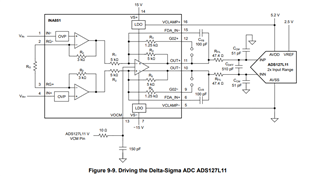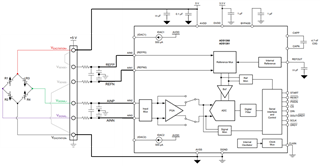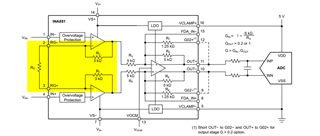Other Parts Discussed in Thread: INA851, ADS1261, THS4551, ADS1261EVM
I am interested in using the ADS1278 to measure the output of a wheatstone bridge with four variable resistors. I see the example circuit in figures 89 and 90 of the datasheet for the ADS1278, using fully differental amplifiers. I do not want to hook up a wheatstone bridge directly to one of these circuits because the output resistance of the bridge can vary by a lot, and that would affect the gain of these amplifiers by combining with Rg. I'm not sure whether to do something like this with voltage followers on the two ends of the bridge:
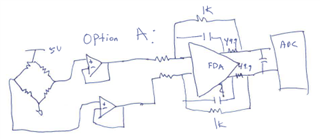
Or whether to use an instrumentation amp that produces a single-ended signal going to the ADC pseudo-differentially, where the N side of the ADC is driven either by VCOM or a DAC to correct the bridge's offset (drawing shows a DAC)
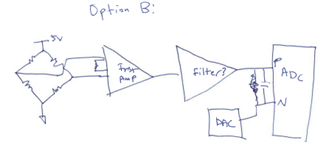
Ideally, I would use an instrumentation amp with a differential output... does such a product exist?
If driving the ADC with a single-ended instrumentation amp output, do you still recommend the 2.2nF capacitor across the ADC input?
Is there some other way to drive a differential ADC so that the source resistance does not factor into the gain that I am not thinking about?
Thanks,
Lucy


